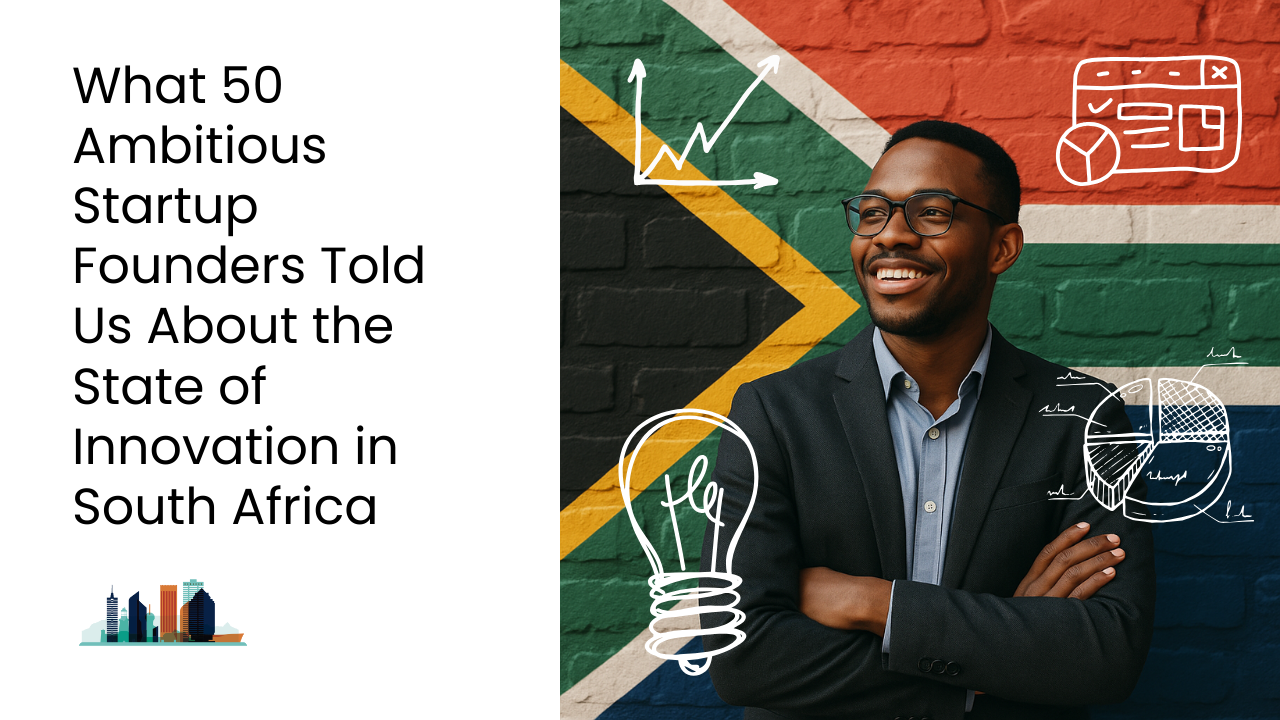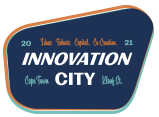
21 May What 50 Ambitious Startup Founders Told Us About the State of Innovation in South Africa
Every year, Innovation City’s Startup of the Year competition attracts ambitious early-stage businesses across industries. Fifty South African startups provided real-time signals from the frontlines of innovation: What are they building, what’s holding them back, and where is this ecosystem going? We analysed the data so you can get a real-time pulse check on the entrepreneurial landscape. Here’s what we learned:
The Builders Are Small, But Mighty
The majority of startups are still in their early growth phases:
- Team Size: Most companies operate with lean teams, the most common size is 1 to 5 people.
- Operating Time: A significant share have been in business between 1 and 3 years, showing that early traction matters in this ecosystem.
These are founders still getting their hands dirty in product development, customer feedback loops, and the scramble to find repeatable revenue.
Fintech, AI, and Afrocentric Innovation Lead the Charge
When asked about their primary innovation sectors, five themes rose to the top:
- Artificial Intelligence
- Fintech
- E-Commerce
- Afrocentric Innovation
- Mobile and Marketplaces
The strong showing for Afrocentric Innovation, defined by several entrants as creating solutions rooted in uniquely African challenges, signals a growing confidence in building for local relevance, not just global ambition.
Funding Journey: Mostly Seed, But Hungry for More
The vast majority of applicants were at the Seed Stage, meaning they’ve found some traction or early customers and are gearing up for scale. A small number have raised Series A or higher, but most are navigating the tough middle ground between product-market fit and sustainable growth.
Revenue: Growing, But Pressured
While the reported revenue growth rates varied, the most common response was “More than 200%,” an ambitious number, suggesting a mix of real momentum and startup optimism.
In terms of targets over the next year:
- 100–200% growth was a common goal
- Some aim for steady 50–100% gains
- Others are shooting for unicorn-scale multiples
Still, many are early enough that revenue may not yet be a core KPI.
The Top Revenue Models: Subscriptions, Transactions, and Ads
Startups reported a familiar set of monetisation strategies:
- Subscription fees
- Transaction-based revenue
- Advertising models
Most respondents listed subscriptions and transactions as their strongest growth drivers, pointing to a preference for recurring or scalable income over one-off sales.
Top Risks: Still the Usual Suspects
We asked founders to identify the biggest risks to their business. The top answers were:
- Customer acquisition challenges
- Resource constraints
- Regulatory uncertainty
- Market education
- Technological disruption
It’s no surprise that finding and retaining customers continues to be the #1 problem, a consistent pain point across early-stage ecosystems globally.
How Startups Are Staying Adaptable
When it comes to staying agile in a fast-moving market, most startups cited:
- Diversification of products/services
- Increased investment in R&D
- Strategic partnerships with banks, service providers, and resellers
A few admitted they have no adaptation plan yet, but recognised the need to change that soon.
It’s Not Just Exciting, It’s Instructive
These 50 startups tell a bigger story: South African startups are evolving. They’re leaning into AI, personalisation, and social relevance. They’re pursuing scalable revenue models and building lean teams that punch above their weight.
If you want to understand where the innovation winds are blowing, and where investment, partnership, and support are most needed, this data may give you a clear signal.
The future isn’t just being built in boardrooms. It’s being prototyped in the hands of small, determined teams who think big!



